Do These 5 Exercises to Prep for Ski and Snowboard Season
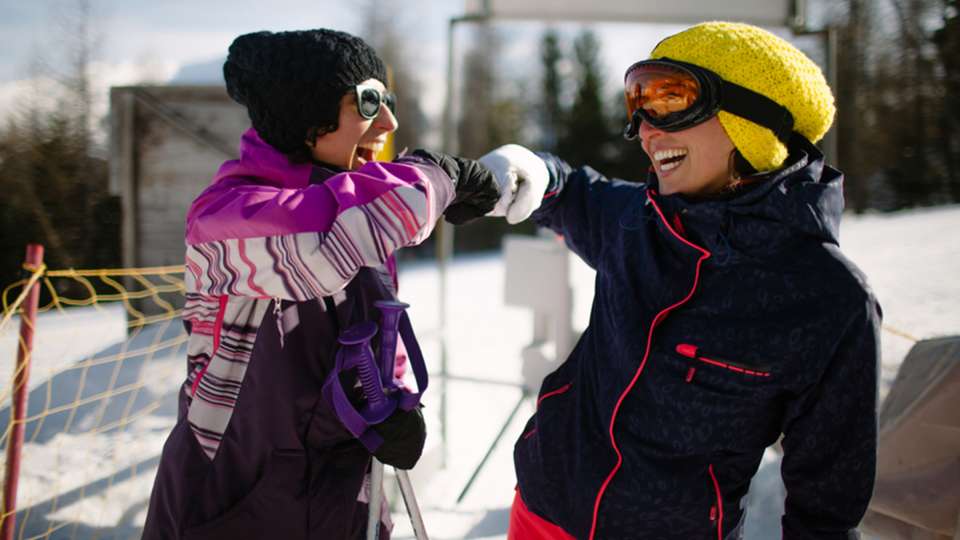
If your idea of getting ready to hit the slopes is bringing your skis or snowboard in to be tuned, you may have more than the powder flu to worry about this winter. It doesn’t matter if you’re going backcountry skiing in the North Cascades or if the bunny slope is more your speed, working on your winter fitness can help you avoid injury and aches and pains.
“In the first months of the season we’re inundated with a lot of new patients who didn’t get themselves ready,” says Dustin Butler, D.P.T., a physical therapist at Advanced Manual Therapy & Sports Rehabilitation in Ballard.
Whether you’re a skier or a snowboarder, turning and stopping requires lumbar spine rotation that isn’t really an everyday activity—especially if you’re working in an office most days. Plus, going over bumps and hitting hard surfaces creates a lot of compression in the knees and spine. That’s why low back and knee injuries are the two most common issues for skiers and snowboarders, says Butler.
He created this workout to target all of the muscles that will keep your back and knees safe on the slopes. It’s designed to help set you up for an injury-free season, so you can focus on shredding pow—and making it to après ski in one piece.
Move 1: Plank on ball
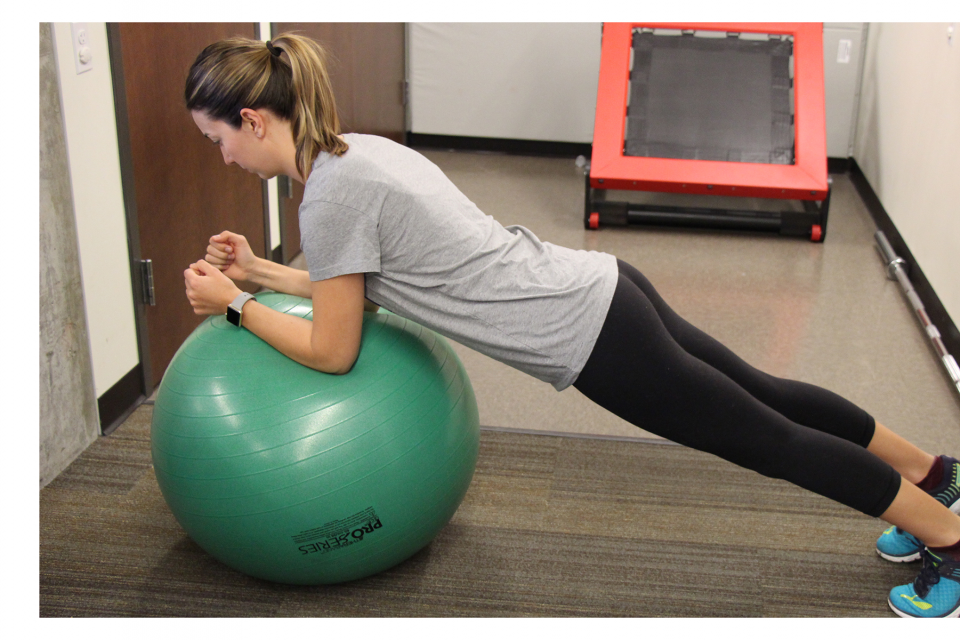
How to: Place your forearms on an exercise ball with your elbows at a 90 degree angle directly below your shoulders. Your legs should be straight behind you with your toes tucked and on the floor. Engage your abs and glutes while keeping your back in a neutral position. Alternate between 10 seconds on and 10 seconds off for one minute. That’s one set: Complete a total of two to five sets. To make it more difficult, use your forearms and elbow to move the ball in small circles.
Benefits: If you’re lucky, every day you head to the mountains this season will be a powder day with soft, cushiony snow your joints love. But the reality is, you’ll probably be spending some time skiing or riding over bumps and hitting hard surfaces. That’s why core strength is so important, says Butler. “If you have easily fatigable or weak muscles, your spine and discs take the brunt of it.”
Move 2: Cable wood chop
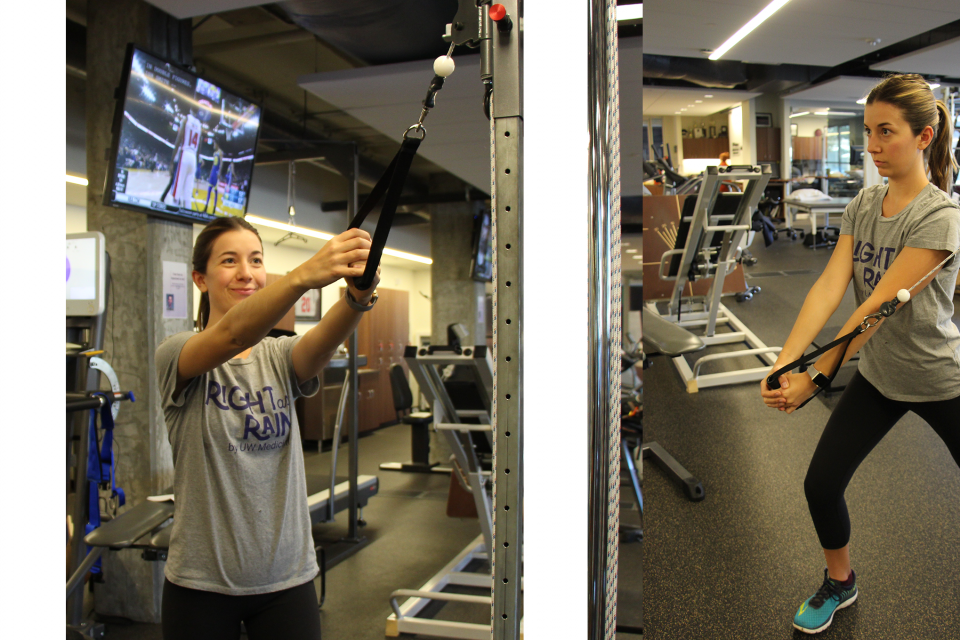
How to: Stand with your right side toward a cable pulley machine with the handle positioned overhead. Stand in a wide stance with your feet facing forward. Reach up and grab the handle with both hands. Engage your core muscles and turn your torso to the left while pulling the cable down and across your body toward your left knee, while also bending that knee. Reverse the motion, moving the cable to its starting position with control. Keep your arms straight and back straight, being careful not to round your spine. Complete three sets of 20 reps on each side. Benefits: Functional exercises like this are great because they mimic everyday movements, says Butler. In this case, chops mirror the rotational movements you make every time you turn your board or skis or try to stop.
Benefits: Functional exercises like this are great because they mimic everyday movements, says Butler. In this case, chops mirror the rotational movements you make every time you turn your board or skis or try to stop.
Move 3: Cable rotational lift
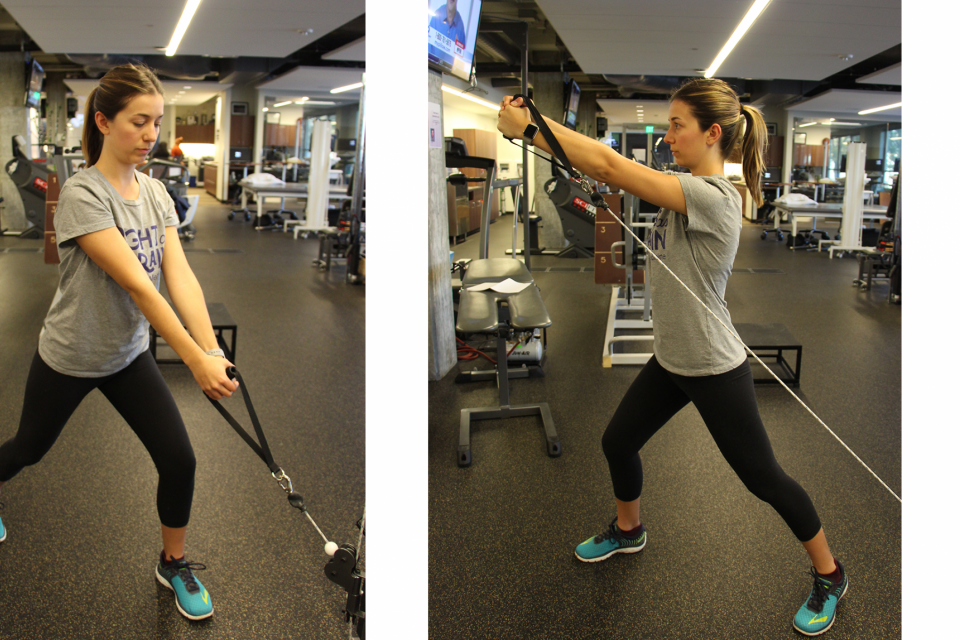
How to: Stand with your right side toward a cable pulley machine with the handle positioned near the floor. Stand in a wide stance with your feet facing forward and a slight bend in your knees. Reach down and grab the handle with both hands. Engage your core muscles and turn your torso toward the left while pulling the cable up and across your body, while also pivoting onto your right toes. Reverse the motion, moving the cable to its starting position with control. Keep your arms straight and be careful not to round your spine. Complete three sets of 20 reps on each side. (Note: If you don’t have access to a cable machine, you can complete either of the cable exercises using a light dumbbell.)
Benefits: Like the cable wood chop, rotational lifts are a functional core exercise that strengthens your core from a different angle. By strengthening your whole core and working on rotation, you’ll be able to turn and stop on the slopes more efficiently, says Butler.
Move 4: Lateral ski jump
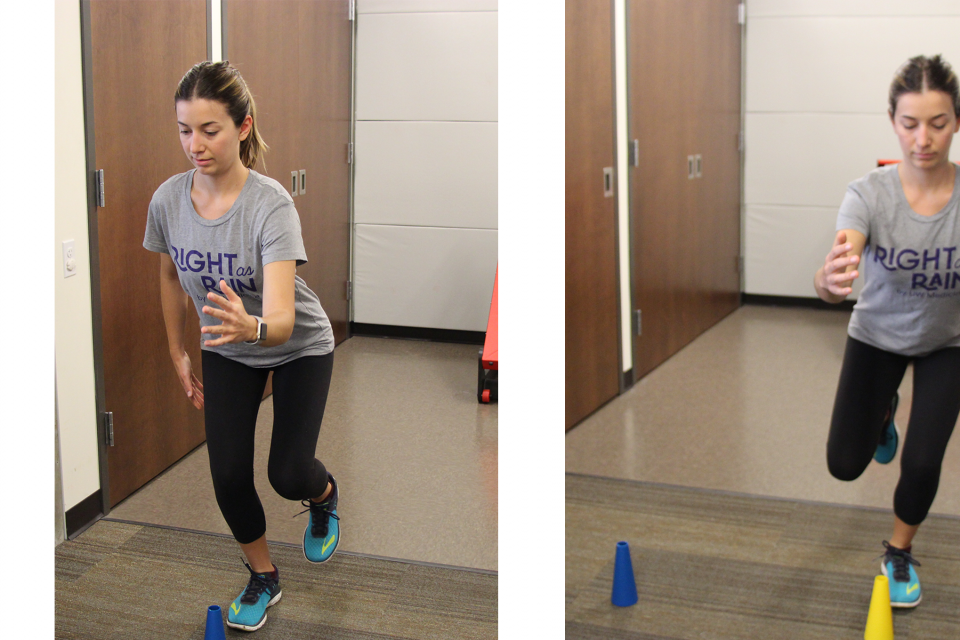
How to: Start in a one-legged mini squat on your right leg with your knee in line with the middle of your right foot. Your left knee should be bent with your foot lifted behind you. Press into your right foot to jump about two to three feet to the left, landing softly on your left foot with bent knee. Balance for three to five seconds before pressing into your left foot to jump back to the right. Complete 10 jumps on each leg. That’s one set: Complete a total of two to three sets. Make sure that your knee stays aligned with your foot and doesn’t turn inward. Jumps should be gentle and pain-free.
Benefits: Lateral ski jumps strengthen the muscles around your knees and challenge your balance, says Butler. They also strengthen proprioception, your body’s ability to sense its location relative to space. You’ll need all of these things when you’re dealing with difficult, uneven and unexpected terrain on trails, says Butler. “Working on the lateral hip muscles will greatly decrease the risk of ACL, meniscus, and other knee injuries.”
Move 5: Lateral toe touch with band
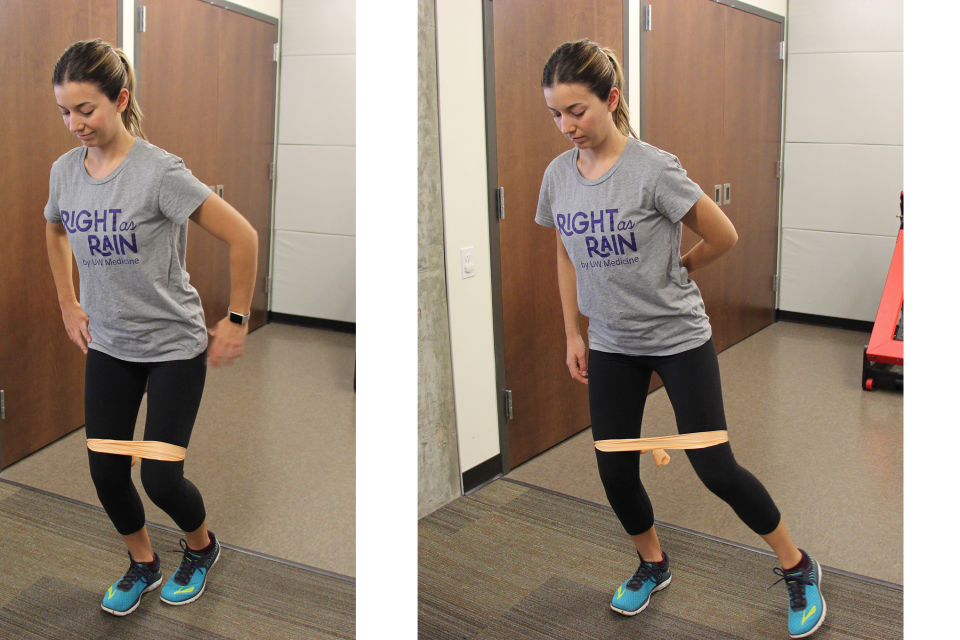
How to: Stand in a wide stance mini squat with an exercise band looped around your legs, just above the knees. Be sure to keep your back in a neutral position. Balance your weight on your right leg, keeping your knee in line with the middle of your foot. Tap your left foot about two feet out to the left, then return to start. Complete three sets of 10 reps on each side, eventually progressing to up to 20 reps. To advance the exercise, place the band around your ankles and lead the movement with your knees.
Benefits: This move targets the glutes and helps build balance, says Butler, both of which are crucial for snow sports that can be tough on the knees. When your glutes are strong, it helps protect your knees by keeping them from collapsing inward. Lateral toe touches also help strengthen the muscles around your hip responsible for external rotation, including the glute medius. If you’re a weekend warrior, take note: These muscles are often weak in people who spend a lot of time sitting, says Butler.
Do these exercises three to four days a week, starting four to six weeks ahead of the season for best results, says Butler. If you find that you can’t do all the reps with good form, work your way up over time. If you have any pain with the exercises, or if these exercises aggravate an old injury, make sure you go see a physical therapist or other health care professional.

 Healthy ideas for your inbox
Healthy ideas for your inbox





